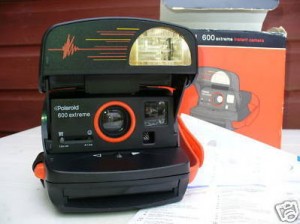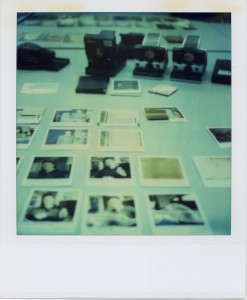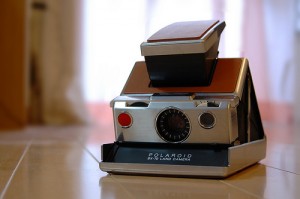 At the time of writing, I’m eagerly awaiting the arrival of my first ever Polaroid camera: the 600 Extreme that I got from eBay for a bargain price of £2.50. Hey, it even was for charity!
At the time of writing, I’m eagerly awaiting the arrival of my first ever Polaroid camera: the 600 Extreme that I got from eBay for a bargain price of £2.50. Hey, it even was for charity!
I wanted it because there’s an ever so slim chance that I can use it with the brand new film by The Impossible Project: PX100 First Flush. It’s a black and white film that fits old Polaroid cameras and has only been released a couple of weeks ago.
The Impossible Project, lead by Lomography founder Dr. Florian Kaps, have bought the last remaining Polaroid film factory in Enschede in 2008 and have since then been working on reviving this brilliant format. I cannot wait to see what they’ve come up with!
 Since Polaroid left about 300 million cameras stranded in drawers and attics around the world without fresh film coming onto the market, my fascination with a medium doomed to be extinct keeps growing daily. I never really cared for Polaroid in the past, mainly because of expensive running costs. The cameras aren’t exactly attractive either. However, my views on the subject have changed in recent years, and ever since I acquired an Instant Back for my Diana I don’t mind telling you that both Julia and I are ADDICTED to instant pictures!
Since Polaroid left about 300 million cameras stranded in drawers and attics around the world without fresh film coming onto the market, my fascination with a medium doomed to be extinct keeps growing daily. I never really cared for Polaroid in the past, mainly because of expensive running costs. The cameras aren’t exactly attractive either. However, my views on the subject have changed in recent years, and ever since I acquired an Instant Back for my Diana I don’t mind telling you that both Julia and I are ADDICTED to instant pictures!
With the arrival of the very first batch of newly produced PX100 film, my interest in Polaroid has skyrocketed. I had to see for myself what I could do with an overpriced and hard-to-get pack of 8 pictures for £20. Considering I haven’t got the right camera, this is bound to be an adventure…
First things first: The Polaroid Camera
When I began looking into this dark and spooky realm of photography, there’s one thing I always found very confusing about Polaroid: there are seemingly hundreds of different film formats for what appears to be only one camera. It’s as if you need a PhD in Polaroid and have to pay £1 for each picture. No wonder they went bust! I had to find out more. Feels like I’m snooping around in top secret Stasi files in Eastern Germany while uncovering these secrets…
Here’s the answer to the first hurdle: http://www.savepolaroid.com have a handy list of film formats – past and present. Looks like there’s more than one camera after all.

I remember we had a black brick Polaroid when I was a kid, and I also remember we hardly used it due to film costs. I must ask my Mum if it’s still floating around somewhere. What I have learnt now is that this would have been an Integral Series 600 camera (Integral meaning that both film and chemicals, as well as a battery to power the camera are all contained in the cartridge).
These cameras were Polaroid’s flagship seller during the 80’s/90’s and are most commonly associated with Polaroid when people talk about the format. The cameras have virtually been unchanged since the their introduction apart from colours and designs. They all contain
- a fairly cheap plastic lens with a focal lenth of 114mm (give or take)
- fixed focus
- fixed aperture of about f11
- a flash on the top
- and if you’re lucky they come with a close-up setting
Some models employ sonar autofocus and most of them fold into an ugly brick. All you can do is point-and-shoot – so it’s fairly amazing when you see the pictures people have created with it.
The new PX100 film however is made for SX-70 cameras… hm! What’s the difference I wonder?
SX-70 vs. 600 – Will it fit?

Well, the SX-70 was Polaroid’s very first integral camera and was introduced in 1972 (that’s when I was born – I feel a connection 😉 ). It was a folding SLR camera and caught the world by storm, despite a hefty price tag of $160 (that’s over $800 in today’s money). Several other models were made using the same type of film. Even though the resulting pictures have the same size (i.e. the trademark sqaure picture with a white border, slightly wider at the bottom – often used by criminals in spooky movies), there is a difference between SX-70 film and 600 film.